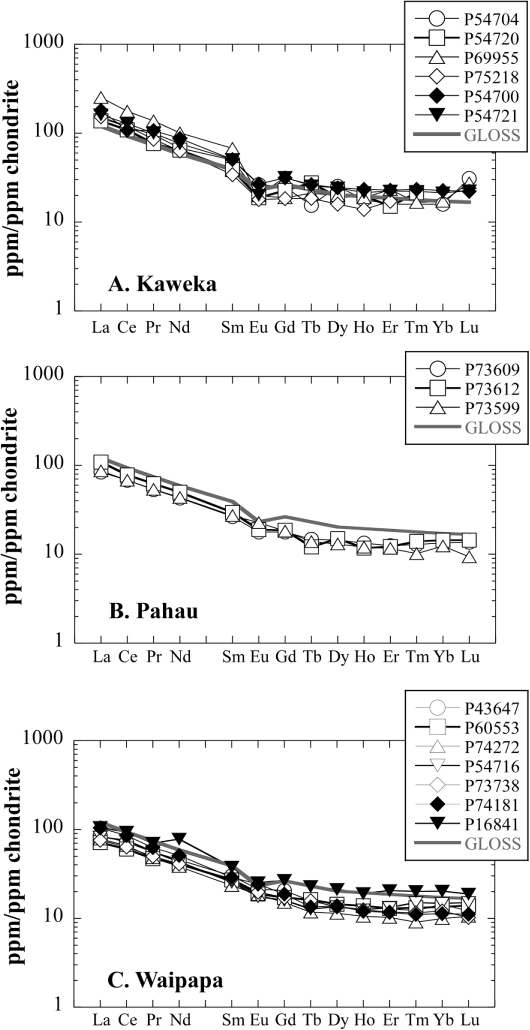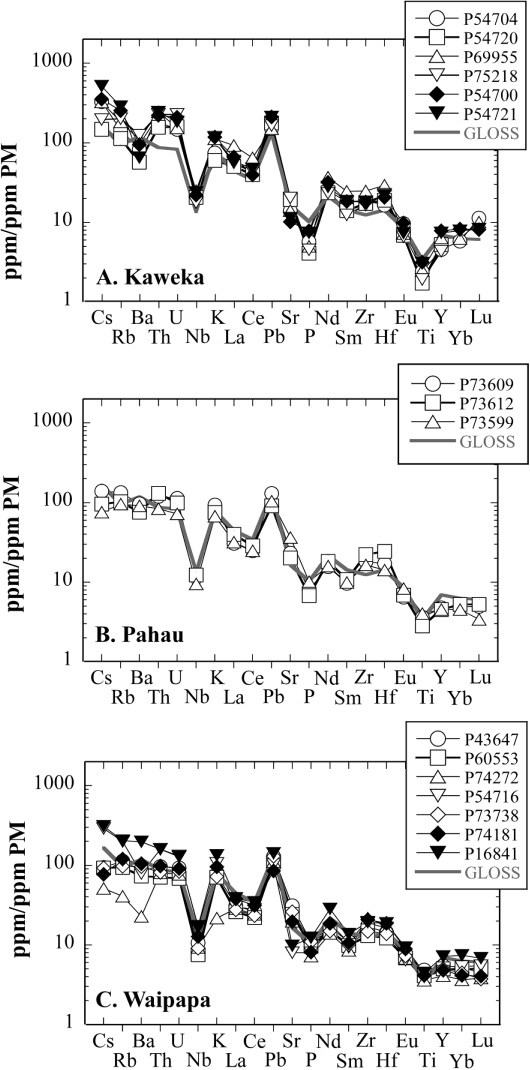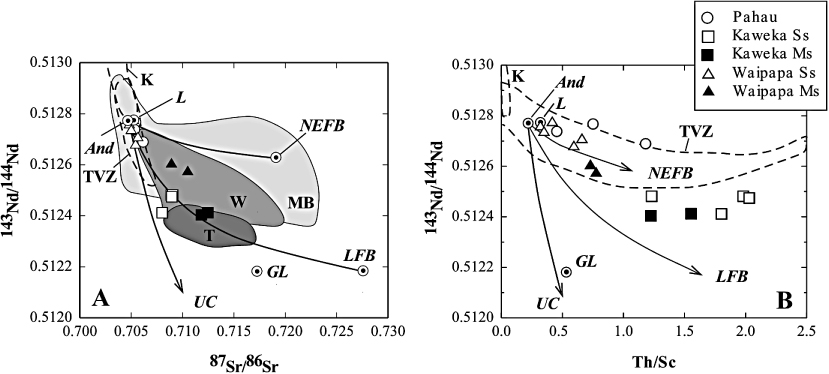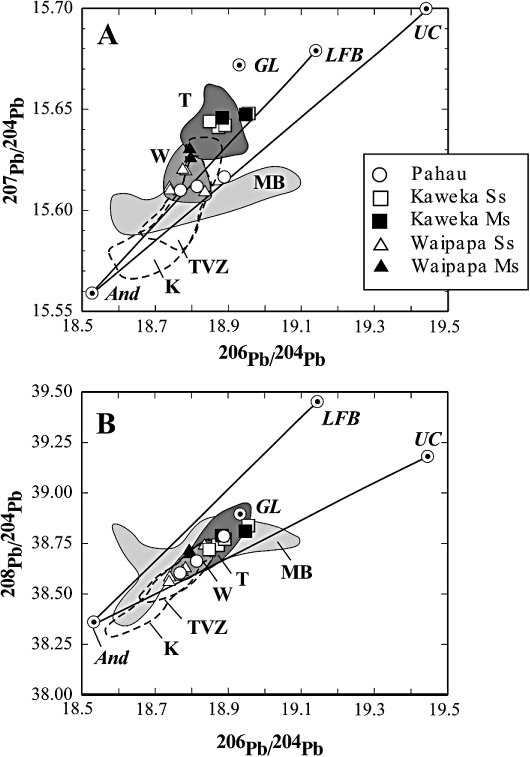Figures & data

Table 1 North Island Torlesse and Waipapa terrane sample locality and stratigraphic and petrographic summary. Grain sizes (to nearest 50 µm) and other petrographic data are from visual examination of unstained thin-sections.
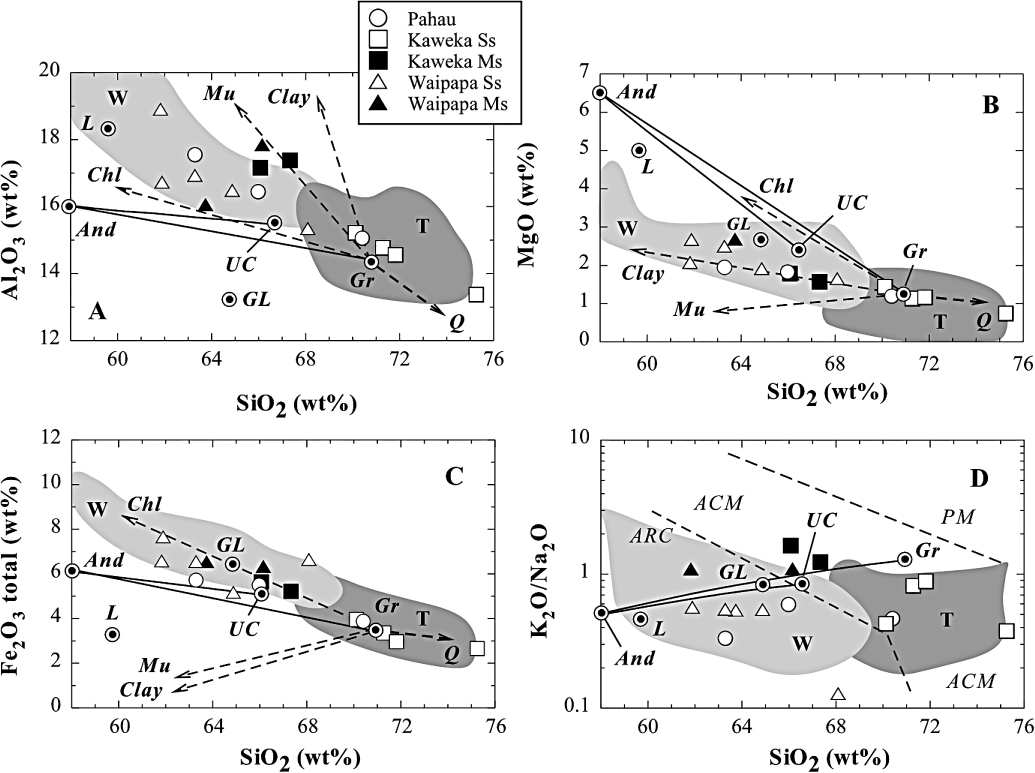
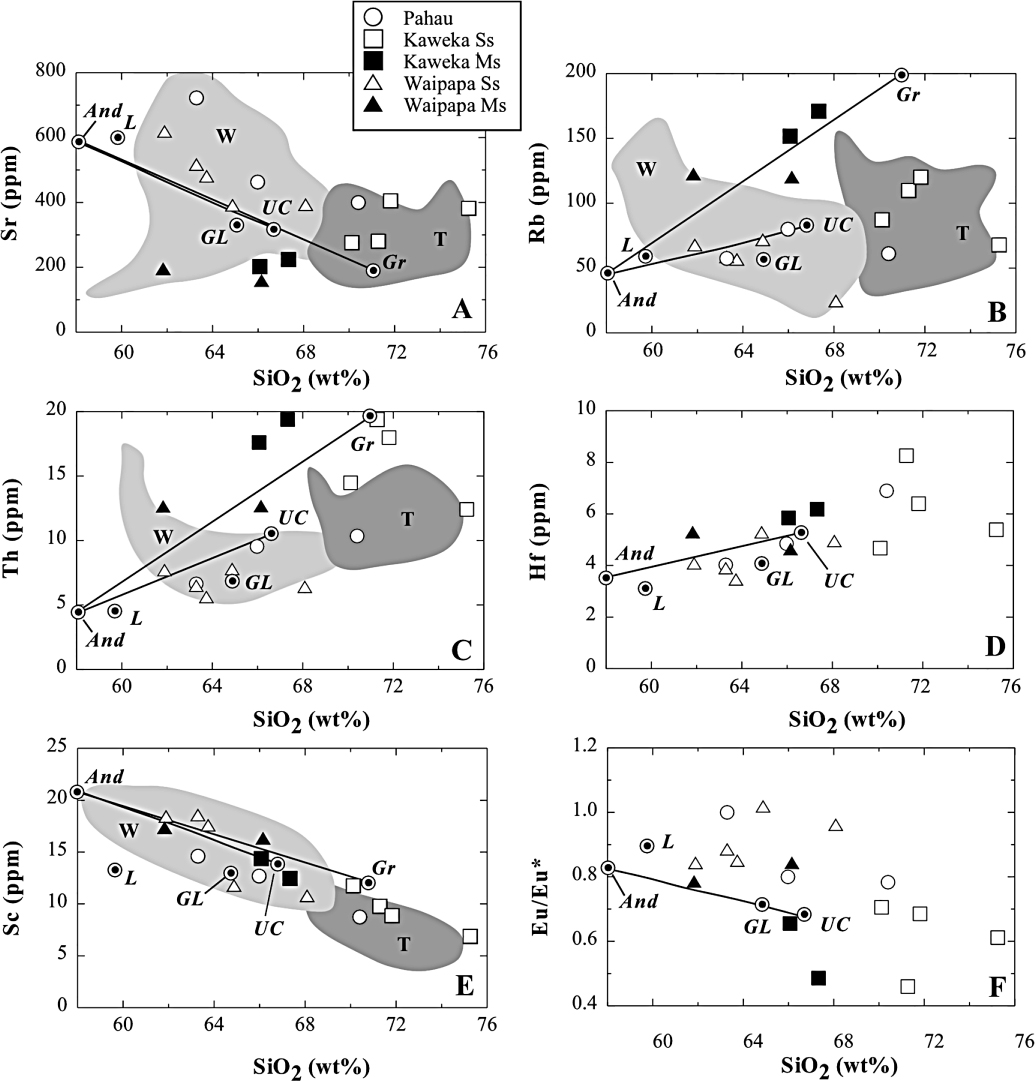
Table 2 Major and trace element and isotope analyses for Kaweka and Pahau terrane samples. Samples P54704–P54721 are Kaweka and samples P73609–P73599 Pahau. Data shown in italics were obtained by LA-ICP-MS. All other analyses are XRF data. Precision and accuracy for major and trace elements and isotopes are discussed in the text. Gaps in the trace element data indicate that either the element was not analysed or that concentration is below the detection limit. Lithologies are summarised in .
